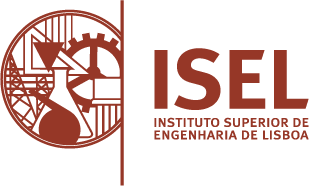Cyber Physical System applied in poultry production
Abstract
Keywords
Full Text:
PDFReferences
C. Finance, “Challenges and solutions for the digital transformation and use of exponential technologies,” Deloitte, 2015.
E. Commission, “Digital Transformation Monitor Country : Portugal ‘Indústria 4.0,’” no. May, 2017.
República Portuguesea - XXI Governo Constitucional, “Governo lança estratégia para a Indústria 4.0.” [Online]. Available: https://www.portugal.gov.pt/pt/gc21/comunicacao/noticia#20170130-mecon-industria-4. [Accessed: 24-May-2018].
L. Da Xu, W. He, and S. Li, “Internet of things in industries: A survey,” IEEE Transactions on Industrial Informatics. 2014.
J. Wan et al., “Software-Defined Industrial Internet of Things in the Context of Industry 4.0,” IEEE Sens. J., 2016.
D. Miorandi, S. Sicari, F. De Pellegrini, and I. Chlamtac, “Internet of things: Vision, applications and research challenges,” Ad Hoc Networks. 2012.
N. Cam-Winget, A.-R. Sadeghi, and Y. Jin, “Invited - Can IoT be secured,” in Proceedings of the 53rd Annual Design Automation Conference on - DAC ’16, 2016.
L. Wang, M. Törngren, and M. Onori, “Current status and advancement of cyber-physical systems in manufacturing,” J. Manuf. Syst., 2015.
Omron, “E3F1.” [Online]. Available: https://assets.omron.eu/downloads/datasheet/en/v1/e94e_e3f1_photoelectric_sensor,_compact_m18_housing_datasheet_en.pdf. [Accessed: 04-Jun-2018].
Cytron Technologies, “E18-D80NK - User’s Manual,” 2012. [Online]. Available: http://synacorp.my/v2/en/index.php?controller=attachment&id_attachment=506. [Accessed: 04-Jun-2018].
STMicroelectronics, “Nucleo - L432KC.” [Online]. Available: http://www.st.com/en/microcontrollers/stm32l432kc.html. [Accessed: 04-Jun-2018].
Mbed, “Mbed OS 5.” [Online]. Available: https://os.mbed.com/. [Accessed: 04-Jun-2018].
Espressif, “ESP8266-E01.” [Online]. Available: www.microchip.ua/wireless/esp01.pdf. [Accessed: 04-Jun-2018].
Maxim-Integrated, “RTC - DS3231 Extremely Accurate I2C-Integrated RTC/TCXO/Crystal.” [Online]. Available: https://datasheets.maximintegrated.com/en/ds/DS3231.pdf. [Accessed: 04-Jun-2018].
A. Knud and L. Lueth, “IoT basics : Getting started with the Internet of Things,” IoT Anal., 2015.
J. Lee, B. Bagheri, and H. A. Kao, “A Cyber-Physical Systems architecture for Industry 4.0-based manufacturing systems,” Manuf. Lett., 2015.
DOI: http://dx.doi.org/10.34629/ipl.isel.i-ETC.48
Refbacks
- There are currently no refbacks.
Copyright (c) 2018 Vitor Vaz da Silva

This work is licensed under a Creative Commons Attribution-NonCommercial 4.0 International License.


